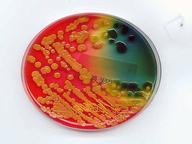Quiz Answer Key and Fun Facts
1. What are usually the first microcrustacean forms to appear in dry mud cultures?
2. These microlife creatures occur in unpasteurized bulk cider vinegar. What are they called?
3. What color is the microfungi penicillium?
4. Tardigrades are also known by what other name?
5. The blooms of these protists gives water a watermelon-like taste. What is this microlife called?
6. Amoebas are classified into two sub-classes, what are they?
7. You suspect microscopic grains on a slide that you exposed to the outside air to be pollen. To test this, you place a drop of a sugar solution on the slide with the grains. If this is pollen, what will happen?
8. This microscopic life makes beautiful glass houses of silica. They are single celled organisms that are one of the most abundant plants on the planet. What are they?
9. This microscopic life form is transparent and has an elongated body that is pointed at the rear. The mouth is at the base of the neck, which can be extended like the trunk of an elephant. What is this ciliophora called?
10. This monster of the microworld has anywhere from five to eight long tentacles, each armed with stinging cells that surround a mouth large enough to swallow microcrustaceans whole. What is this lifeform called?
Source: Author
cohocola44003
This quiz was reviewed by FunTrivia editor
crisw before going online.
Any errors found in FunTrivia content are routinely corrected through our feedback system.


